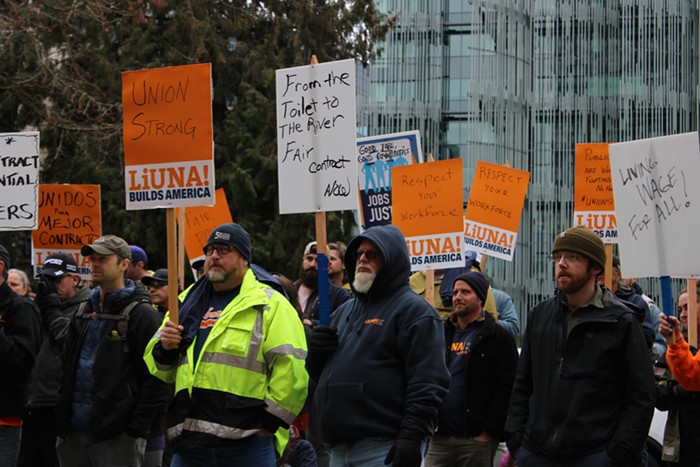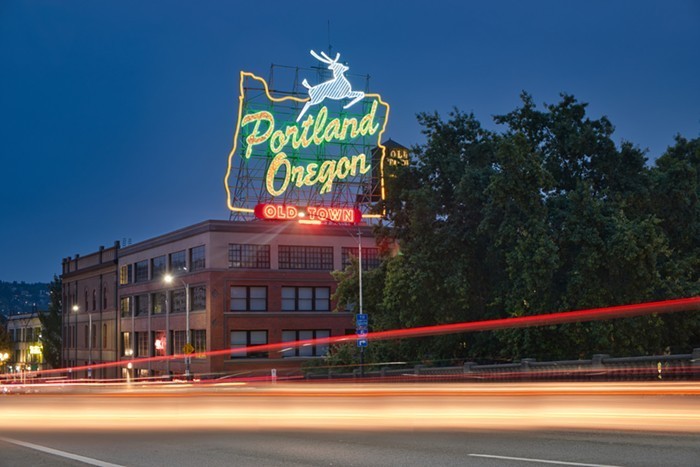Gentrification and the Eviction of Urban Culture
by Rebecca Solnit (Verso Books)
The Hollow City looks like a small, stylish coffee table book. It begins with a series of black and white photographs titled "Wrecking Ball Overture;" this is a photo essay, combining the dialogue of construction workers, finishers, and developers with images of demolition. After the first series of photos, The Hollow City launches into a comprehensive, articulate, and expressive analysis of why we've essentially lost the richness and vitality of what has always been San Francisco. It's a warning to those in other cities, and a call to action for anyone concerned about the evolution of urban life.
Rebecca Solnit writes, "This is a story about love and money. Or a story about love, money and location. The new economy is as different from the old economy as a tourist economy is to the remote village it suddenly lands in; the campesinos can't afford those hotel rooms and drinks, and San Franciscans' can't afford the transformed San Francisco. As things we took for granted vanish day by day, San Franciscan's love for their city becomes more and more evident. People speak constantly, obsessively, of what is happening, and mourn what is being lost. Several photographers devote themselves to documenting the vanishing places--the same kind of salvage photography once used to document vanishing fourth world cultures and crafts or that Eugene Arget and Charles Marville used to capture a vanishing Paris."
And The Hollow City should be a coffee table book, on every coffee table in Portland. It should be required reading within the city limits. San Francisco has allowed economic evictions to force out artists, ethnic minorities, the poor, the ill and elderly, and given the city over to the short and superficial culture of the dot-com industry. Seattle's cultural scene is fed and ravaged--homogenized and controlled--by Microsoft and other major corporations. Portland is simultaneously vulnerable and yet somehow slightly protected by its reputation for being relatively insular and provincial, but Portland too is deep in the process of gentrification, capitalism claiming neighborhoods, chain stores replacing independent providers.
Solnit approaches the question of gentrification in all its complexity, avoiding falling into the trap of searching for simple cause and effect, such as white vs. black, hispanic or latino, or newcomer vs. longtime resident. She illuminates the larger dynamics that contribute to gentrification, and looks at the psychological and economic source of ineffective finger-pointing.
The book as a whole, and certain passages in particular, contributes directly to the conversation going on around areas such as Portland's Alberta St. neighborhood. In defining the process of gentrification, Solnit writes, "...the first influx is a sort of pre-gentrification; it consists of people who have more economic mobility, though not necessarily more income, than the earlier residents and who value the existing character of their new neighborhood. Some become community activists. Intolerance seems to arrive with affluence, and the worst thing that can be said about those in the first wave is that they attract the second, affluent influx or at least--especially if they're white--make the neighborhood more palatable and noticeable to those with bigger pocketbooks. By conflating the first influx with the second or holding the first responsible for the second, many analysts of gentrification blame it on artists, and this argument has become commonplace...it's art as a lifestyle rather than a discipline that contributes to changing neighborhoods."
The book documents a tragedy, but it's conversational and funny too, including the voices of local figures on the San Francisco art scene and the "anti-yuppie" front. At one point the author meets with Kevin Keating, a man briefly famous for his posters advocating vandalism of everything from corporations to BMWs as an effort to drive the affluent out of the neighborhood.
In conversation, Keating digresses into differentiating between things such as good and bad sushi bars, based not on the quality of the food, but on the socio-economic implications of the place itself--a distinction which the author calls "a little subtle." Keating, of course, is actually trying to articulate his own struggle by insisting he's not a yuppie, not part of the problem, but that he does appreciate a good sushi bar. And we're knee deep in the murk of trying to define when convenience and luxury becomes too much, when selling out is based on participating as a consumer, and where exactly the line is between harmless and harmful existence within a changing urban center.
Solnit seems to be addressing our own Pioneer Square and the surrounding stores, as well as the city as a whole, as she quotes Bill Saunders, editor of Harvard Design Magazine, in his analysis of the new Harvard square: "The new Square reflects the world-wide increase in the imperialism of a small, delocalized number of rich and powerful organizations...The Square is now: more impersonal (e.g., the sales and service people are rarely familiar or interested in the buyer), more expensive (after inflation), more exclusionary (less welcoming and less affordable to eccentrics, the middle and working classes, and the marginally employed), more predictable, more uniform, and more like other places (a Gap is a Gap is a Gap)...along with the Square's greater polish, luxury, and upscale taste comes new subtle pressures to be rich and beautiful, constrained and role-bound."
As a long time Portlander, I've felt the sense of something being lost, and a longing for a time back when the city was smaller and cheaper, when NW 23rd and 21st were lined with with two-bit taverns and low rent buildings, and the alphabetized NW streets were a mix of halfway houses, thrift stores, and homes. Sometimes I've worried this is simple nostalgia, a sentimental longing for a good party long over, or even laziness on my part, recollecting the days when I didn't have to work so much to pay for the basics. I've written about the formerly low-rent apartments of The Lawn apartment building, and the loss of the artists' space above Kelly's Olympian downtown. I've interviewed artists, many perplexed by the feeling of working more to earn less, and having less time to devote to art.
Now with The Hollow City, Solnit has made clear that feelings of loss with the last decade or so of change aren't merely sentiment or nostalgia. There's a question of urban planning and of control at the heart of many seemingly benign transformations, motivated by capitalism rather than community. "Revitalization" efforts can sap the vitality of more complex, diverse, and integrated communities, and money can destroy the life of a neighborhood as effectively as poverty.














